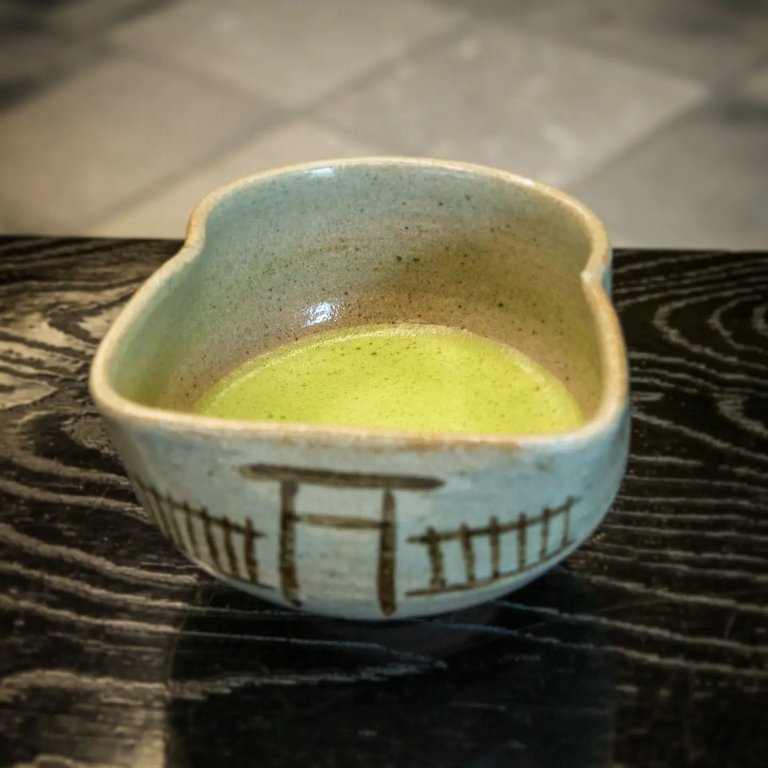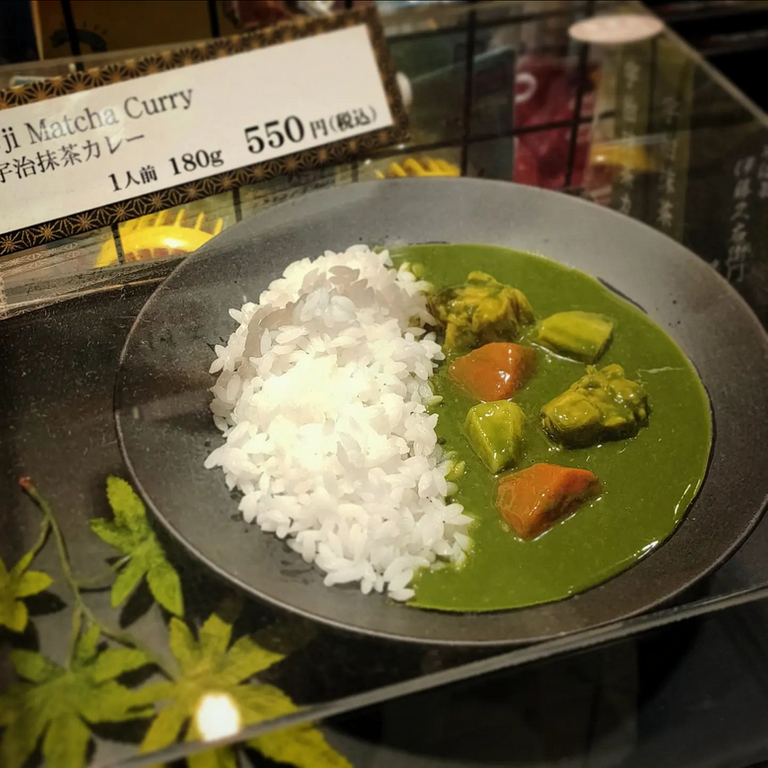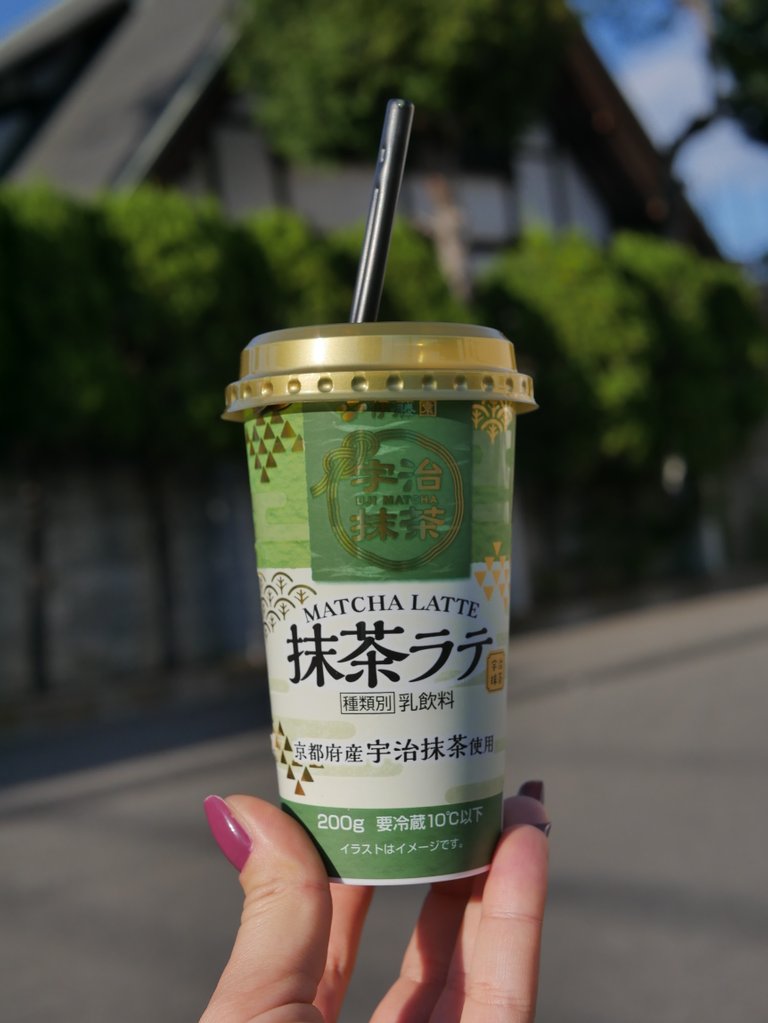Introduction to matcha, the powdered green tea

In yesterday's post, I presented Sen no Rikyu and his legacy to the Japanese way of Tea.
He was the one who developed the wabi-sabi approach for the Japanese tea ceremony, and if you want to know more about it, you can read the post just here!
I did not explain it earlier, but the Chanoyu (the Japanese name for their ceremony) is the art of preparing matcha, the Japanese powder tea.
You may have heard about it since it became very trendy in communities promoting a certain type of food for health. It is said to have a lot of benefits, but most of the time, it is only used because of its deep green color and makes funny flashy green dishes!
Bonjour à tous!
Dans le post précédent, je vous ai parlé de Sen no Rikyu et de son héritage: la cérémonie du thé japonaise.
Il a été celui qui a développé cette vision wabi-sabi du thé et l'a codifiée pour en faire une cérémonie. Si vous voulez en savoir plus à ce sujet, vous pouvez lire ce post!
Je ne l'ai pas mentionné auparavant, mais la Chanoyu (nom japonais de la cérémonie du thé) est l'art de préparer le matcha, le thé en poudre japonais.
Vous en avez sûrement déjà entendu parler car c'est devenu un aliment très en vogue dans certaines communautés axées sur la nourriture bien-être. On raconte que le matcha a de nombreuses qualités mais la plus part du temps, il est utilisé pour sa couleur vive et pour préparer des plats vert fluo!

Although it can be used for cooking and pastries, there is a major difference between cooking matcha and the "ceremonial grade".
The higher grade has a deep green, while the cooking one is much paler. The smell and taste are also very different, and I am not even talking about price!
Même s'il peut être utilisé en cuisine et en pâtisserie, il y a une différence de taille entre le matcha de cuisine et le "grade cérémoniel."
Le matcha de qualité est vert plus foncé tandis que le matcha culinaire est plus pâle. Les arômes et le goût sont également bien différents et je ne parle même pas du prix!

The low-cost matcha can be priced as low as USD15 for 100g but at this price point, it is grown in China in large plantations with modern and fully automatized processing. Note that even for the culinary grade, you might end up paying way more than USD15 for 100g if you buy in your local organic grocery store!
The genuine ceremonial grade is closer to USD50-60 for 30g! At this price point, it was (most likely) produced in Japan with a hybrid man-machine approach. Usually, the harvest and first processing of the leaves is done by machines, but the shading (we will talk about this in a minute) and sometimes the grinding into powder is handmade. Higher grades are also made with younger leaves, making the tea more aromatic but also scarcer.
Le matcha bon marché peut descendre jusqu'à 15USD les 100g. Cependant, à ce prix, il s'agit de matcha produit en Chine dans de larges plantations entièrement automatisées. Il est également à noter que 15USD pour 100g est un minimum et il est bien souvent vendu beaucoup plus cher dans les épiceries bio!
Le vrai matcha de grade cérémoniel est plus proche des 50-60USD pour 30g! A ce prix, il a été (vraisemblablement) produit au Japon selon une méthode hybride. En règle général, le thé est récolté à la machine mais l'ombrage (nous allons en parler dans 2 minutes) et parfois le broyage sont fait à la main. Le meilleur grade de matcha est également produit à partir des plus jeunes feuilles, ce qui donne plus d'arôme au thé mais qui réduit aussi les quantités produites.

The principal taste of matcha is referred to as "umami" which is one of the five basic tastes together with sour, salty, bitter, and sweet. It is usually associated with the taste of glutamate and is caused by the high content of amino acids contained in the leaves.
That's all for the rapid presentation of matcha and tomorrow we will talk about the production methods for this tea.
Le goût caractéristique du matcha est appelé "umami". Bien que méconnu c'est l'un des 5 goûts de base avec le salé, le sucré, l'acide et l'amertume. Ce goût est généralement associé au glutamate et en France le fromage est également umami. Dans les feuilles de thé, ce goût est provoqué par leur haute teneur acides aminés.
C'est tout pour aujourd'hui et demain nous parlerons de la méthode de production du matcha!
Thank you for reading until the end! I hope you liked this post about matcha. As always, feel free to leave a comment!

Edit: added missing links and corrected typos
Congratulations @emeraldtiger! You have completed the following achievement on the Hive blockchain and have been rewarded with new badge(s):
Your next target is to reach 800 upvotes.
You can view your badges on your board and compare yourself to others in the Ranking
If you no longer want to receive notifications, reply to this comment with the word
STOPCheck out the last post from @hivebuzz:
Support the HiveBuzz project. Vote for our proposal!
I learned something new today and that is Umami. Thanks for sharing your knowledge about Matcha.
Thank you for your comment!
I am glad you enjoyed the post and you learned something!
Curation, Reblog inclus (@HIVE-143869) par la Principauté du Bastion.
Merci pour cet article.
ItharaGaian
Principauté du Bastion
Merci beaucoup pour le soutien !(Le thé, c'est pas forcément une passion très commune 😆)
Avec plaisir.
C'est tres tres particulier le macha. Je n'ai jamais ete sur d'aimer ou de detester, ce qui peut paraitre bizarre. Il faudra que je reteste (une fois de plus) a mon prochain sejour au Japon (en mars si tout va bien au niveau COVID).
Le Japon commence à réouvrir ses frontières pour les touristes, c'est donc une bonne nouvelle pour toutes les collaborations culturelles et scientifiques!
En ce qui concerne le matcha, je dois bien avouer que comme pour beaucoup d'aliments japonais, il y a une part "d'acquis" 😄
Je me souviens qu'en arrivant au Japon j'avais pas du tout aimé le mugi Cha (thé de blé/orge torréfié) et maintenant je le bois sans aucun problème ! Il y a peut être un peu de ça avec le matcha, surtout celui préparé de la manière traditionnelle.
En tout cas, merci pour votre retour et bon voyage au Japon!
Oui c'est probablement une question d'habitude. Je ne suis jamais reste au Japon assez longtemps pour m'habituder (3 semaines d'afille tout au plus).
A bientot !
J'ai toujours rêvé d'y aller.
Maintenant, pas sur que cela arrivera, alors je lis des articles ou je regarde des vidéos :-)
!PGM
!PIZZA
J'espère que vous pourrez tous les deux y venir, il y a pleins de d'endroits super à visiter !
Je n'en doute pas. J'ai visite le Japon 4 ou 5 fois durant la derniere decennie (une fois en vacances et le reste pour motifs professionnels). Mon prochain voyage sera a destination d'Iwate, donc un peu loin de Tokyo (ou tu te trouves si je ne m'abuse). Ca sera sans doute complique de se croiser. Mais on essaiera le cas echeant.
Wow Iwate, c'est pas commun !
Je n'y suis jamais allé, mais je sais qu'ils ont des forgerons spécialisés dans la fabrication des tetsubin, les bouilloires traditionnelle en fonte (et je parle bien de bouilloire sans revêtement à l'intérieur et non pas des théières en fonte que l'on trouve en France et qui n'ont pas grand intérêt selon moi 😄).
Enfin bref, encore une fois une histoire de thé, un article viendra, tôt ou tard !
Par contre c'est vraiment très loin de chez moi puisque je suis à Osaka ^^
Ah oui effectivement! C'est quasi a l'oppose.
Iwate est le site selecitonne pour la construction de l'International Linear Collider, en supposant que le projet soit accepte. Si la science autour du projet est claire, la partie politique est pour le moins obscure et difficile a decrypter. Du coup, tout stagne depuis un bon moment... A voir.
PS: j'ai ete deux fois a Osaka. Une ville tres sympa ;)
Ahh un nouvel accélérateur à particules à Iwate ? C'est intéressant !
Par contre je crois qu'il n'y a pas grand chose là bas, ça va être vraiment dépaysant pour les étrangers envoyés la bas !
La politique, surtout au Japon c'est jamais du rapide!
L'avantage d'Osaka c'est qu'à 1h de train il y a pleins d'endroits intéressant à voir (Nara, Kyoto, Kobe...)
Et oui ! D'ailleurs, les fesses de @lamouthe se souviendront toujours de Nara (elle s'etait fait mordre par un daim ; il y avait un snack dans sa poche arriere)
Aïe ! Ça doit faire mal!
On y est allé le weekend dernier (les photos arrivent ^^ ) et on a dû disputer notre repas aux daims qui sont venus voler tout ce qui traînait, emballages compris !
Mais bon, c'est un bel endroit, il faut faire attention aux daims cependant 😆
Heureusement, apres plus de 8 ans, il n'y a plus aucune trace. ;)
Je confirme ! Une ville tres agreable aussi avec pas mal d'espaces verts (sauf si ca a change depuis).
Le grand parc abritant les différents temples et les daims n'a pas bougé !
Par contre je ne me suis jamais promené dans la ville donc je sais pas vraiment si ça a changé.
Tu ne dirais a l'occasion, si jamais tu y repasses (ca risque d'arriver plus vite que pour moi ;) ).
A bientot !
I really enjoy the matcha drinking ceremony. I enjoy the attention and care that the Japanese pay to the small delights of living. Great post!
Thanks !
Yes, the atmosphere of Chanoyu is really something else, it is an unforgettable experience!
PIZZA Holders sent $PIZZA tips in this post's comments:
@itharagaian(3/5) tipped @lemouth (x1)
Learn more at https://hive.pizza.
Matcha curry??? I've never seen that before...
Before my kids were born I used to buy matcha and make a cup for myself every morning. I had an expensive teabowl and whisk and all the works. I got to the point where I could make it pretty well. But these days my money goes to... well, kids mostly. Maybe someday I can enjoy matcha again!
I saw it in a souvenir shop but I did not dare to try 😆
Wow, that's impressive! It is true that making a good bowl of matcha is expensive in both time and money, things that go even scarcer with kids I imagine !
Maybe one day they will want you to show them how it is done and you could continue but with your kids ^^